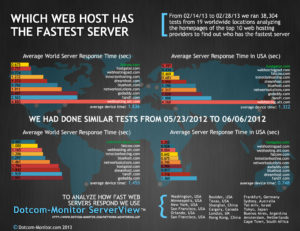DDoS Attacks on Banks | Cyber Attacks on US Banks Continues
If you bank with anyone larger than a local credit union, it’s likely your bank’s website has been attacked within the past few months as recent denial-of-service cyber attacks have increased in both frequency and severity. An April 2013 NBC News report found that in the six weeks prior, 15 of the nation’s largest banks were offline for a total of 249 hours due to denial of service cyber attacks.
Charles Schwab Website Down | Schwab.com Downtime Issue
April 23, 2013, 4:59 PM CST – Charles Schwab Website Down. At this time, Dotcom-Monitor is tracking a Schwab downtime issue. As of 4:49 PM CST the errors include very long load times from most worldwide monitoring locations, including: Minnesota, New York, London, California, Hong Kong, Montreal, Frankfurt, Colorado, Sydney, Texas, Amsterdam, Tel-Aviv, Amazon East Cloud, Shanghai, Buenos Aries, Amazon Cloud-Japan, and South Africa.
IPv6 Requires a New Approach to Website Monitoring
Dotcom-Monitor has established a Native IPv6 Monitoring Bureau dedicated to effective end-to-end IPv6 website performance monitoring. Dotcom-Monitor tests for performance and accessibility and can also simulate real user activities such as validating text and images as well as portal logins and shopping cart functionality.
Silverlight Monitoring with Rich Internet Application Monitoring
A challenge for monitoring Silverlight is creating browser-driven monitoring scripts that mimic end user actions that won’t break due to the dynamic nature of Silverlight. In fact, many advanced monitoring solutions that use browsers won’t succeed in running a monitoring script through a rich interactive Silverlight application. In order to monitor Silverlight (or any RIA) an additional level of technical sophistication – beyond only a browser-driven monitoring script – is often needed.
Online Banking Outage: Wells Fargo down
Dotcom-Monitor is tracking a Wells Fargo down website based on a consistent failure to connect host issues that began at approximately April 4, 12 PM CST. Dotcom-Monitor has been tracking a history of banking website outages for several months and has provided analysis of banking outages for the financial industry for issues involving recent PNC bank outages, U.S. Bancorp outages, and a previous Wells Fargo outages.

Fastest web host … best web hosting companies, put to the test [infographic]
We compare the best web hosting companies, monitoring from around the globe to see whose website loads the fastest, indicating superior server performance. [infographic]
Signs of a DNS Apocalypse? | Protecting yourself from DNS Outages
AT&T and GoDaddy’s Domain Name Server (DNS) outages impacted vast areas of the Internet when they hit in 2012, taking down millions of websites. Learn more about the DNS process and take steps to protect your website from potential DNS disasters in 2013.
Dyn Webinar: Managed DNS Load Balancing featuring Dotcom-Monitor
Every month, Dyn strives to bring a new thought leader in web speed, uptime and email delivery to the masses via their Dyn Webinar Series: free, hour-long interactive discussions streamed live. Dotcom-Monitor is proud to be partnering with Dyn for this month’s webinar, Intro To Managed DNS Load Balancing.
Achieve Real Flash Monitoring to Ensure Web Performance
Flash Monitoring for Web Performance – Adobe Flash has played an important role in making the Internet a more engaging, interactive place. It serves as one of the preeminent Web 2.0 Rich Internet Applications (RIAs) by allowing enterprises to deliver a high quality on-line experience. Web designers use Flash to incorporate active and interactive content like video and animations. Flash continues to be important driver behind appealing web content and unique user experiences.
However, properly monitoring Flash to ensure users have a consistently compelling user experience, presents a challenge.
Web Stress, Slow Websites & Your Brain [INFOGRAPHIC]
Is your slow website giving your customers “web stress”? Studies show 57% of online consumers will abandon a slow page after just 3 seconds.
Getting to the Core of Website Uptime – Part 1
Website Uptime isn’t a Condition, it’s a Calculation
Central to service level agreement (SLA) reports is the concept of website “uptime.” However, what exactly is uptime? Website uptime, in the recent past was often narrowly defined as the working vs. non-working condition of a web server, ie web server uptime. More recently, we have worked with many organizations that are carefully defining the details of website uptime vs. downtime, by taking into account variables like network uptime, server uptime, web application uptime, or website uptime, has become critical.
How Social Media Makes Websites Anti-Social | Features vs Performance
For most online businesses, integrating social media into their website has enabled them to interact with their customers directly. Social media widgets offer customers the ability to have real-time engagement with the business, its products, and like-minded consumers.
Today’s DevOps are increasingly saddled with third party social media widgets (or applications). By relying on external content, developers become dependent on the quality of that third-party content delivery, which, in turn, impacts the performance of their website. Due to lack of third-party element control, developers find difficulty monitoring vital statistics related to network health.
Developers can use externally-based web performance tools to determine if their social media app integration is worth the wait.

